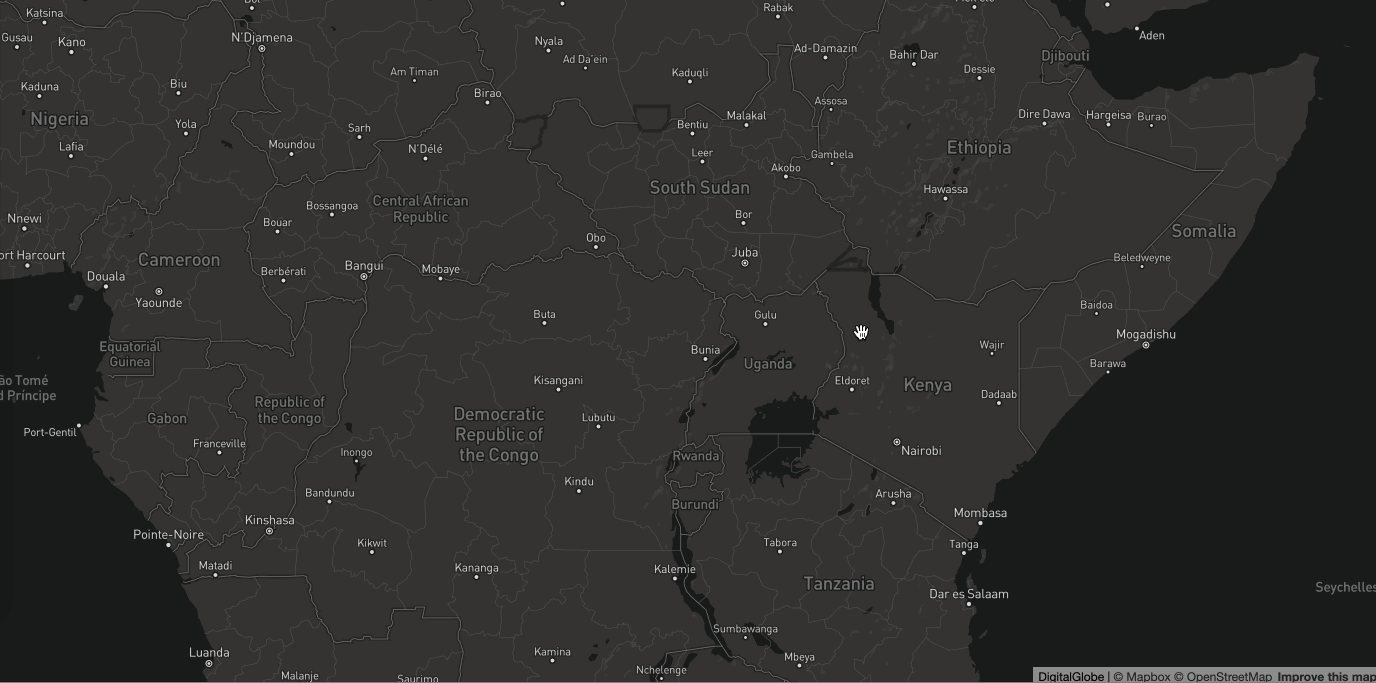Today is World Refugee Day, so we want to highlight some early work on finding people who have been forced from their homes. This is part of a larger effort with the Conflict Ecology research lab at Oregon State University and Humanitarian OpenStreetMap Team.
A person is forcibly displaced from their home almost every two seconds. Driven by conflict and disaster, the population of displaced people worldwide grew to 70 million people at the end of 2018. This represents a new global record, slightly larger than the population of France. Whether they are refugees seeking assistance in another country or internally-displaced persons (IDPs) staying within their national borders, these people are among the world’s most vulnerable. Their day-to-day life is focused on survival and the well-being of loved ones. Families regularly lack basic necessities like clean food and water, medical care, and protection from violence. Even if their lives aren’t immediately at stake, adults often have no job, children no school, and families no home.
Organizing a humanitarian response to conflicts and disasters is a tough task. After being displaced, refugees and IDPs typically coalesce into informal settlements. However, the often chaotic and fluid situation means that information on the whereabouts of these settlements is inconsistently available and usually out of date. The lack of accurate information impedes the deployment of humanitarian resources, so these people often don’t receive the emergency assistance they need. Someone has to put them on the map.
 Examples satellite images of known refugee settlements from Uganda and Kenya. Source: Maxar
Examples satellite images of known refugee settlements from Uganda and Kenya. Source: Maxar
We are working to find informal settlements from space. This is part of a broader NASA-funded research effort led by Prof. Jamon Van Den Hoek’s lab at Oregon State University and also in collaboration with the Humanitarian OpenStreetMap Team. We aim to use massive satellite datasets and new AI tools to autonomously find informal settlements; combining the two makes it possible for us to scan through an entire country’s worth of high-resolution satellite images in just hours. Eventually, a system like this could automatically inspect conflict-prone regions on a quarterly or monthly basis looking for the establishment and growth of informal settlements. While our automated pipeline is unlikely to identify every new settlement, we can provide experts with pre-sorted list of the most likely candidates. Empowered with this information, aid organizations should be able to more efficiently direct resources to those in need.
 Machine learning can help find informal settlements in satellite imagery. As part of our testing, we ran our machine learning model over a small area near Kakuma, Kenya, that was known to contain a refugee camp. In this animation, the grid of orange dots signifies locations where the model predicted the presence of an informal settlement. Our goal is to eventually run this analysis over entire countries and provide the AI-derived map to aid organizations.
Machine learning can help find informal settlements in satellite imagery. As part of our testing, we ran our machine learning model over a small area near Kakuma, Kenya, that was known to contain a refugee camp. In this animation, the grid of orange dots signifies locations where the model predicted the presence of an informal settlement. Our goal is to eventually run this analysis over entire countries and provide the AI-derived map to aid organizations.
Looking ahead, we’re hopeful about the strength and effectiveness of the humanitarian community and their ability to restore the lives of the forcibly displaced. Satellite datasets, and the computational platforms to analyze them, have grown at an incredible pace over the past several years, and these developments are fertile ground for a new breed of collaboration. It’s one that mixes rigorous knowledge from academia, powerful AI tools from industry, and practical expertise of NGOs to extract better insights with fewer resources. This blend of skill sets, data, and tools should help search out and identify informal settlements within days of a new conflict or disaster thereby bolstering the response. We’re cautiously optimistic that by this day next year, the humanitarian community will begin to use these insights to improve the lives of more refugees and IDPs than is possible today.
What we're doing.
Latest
